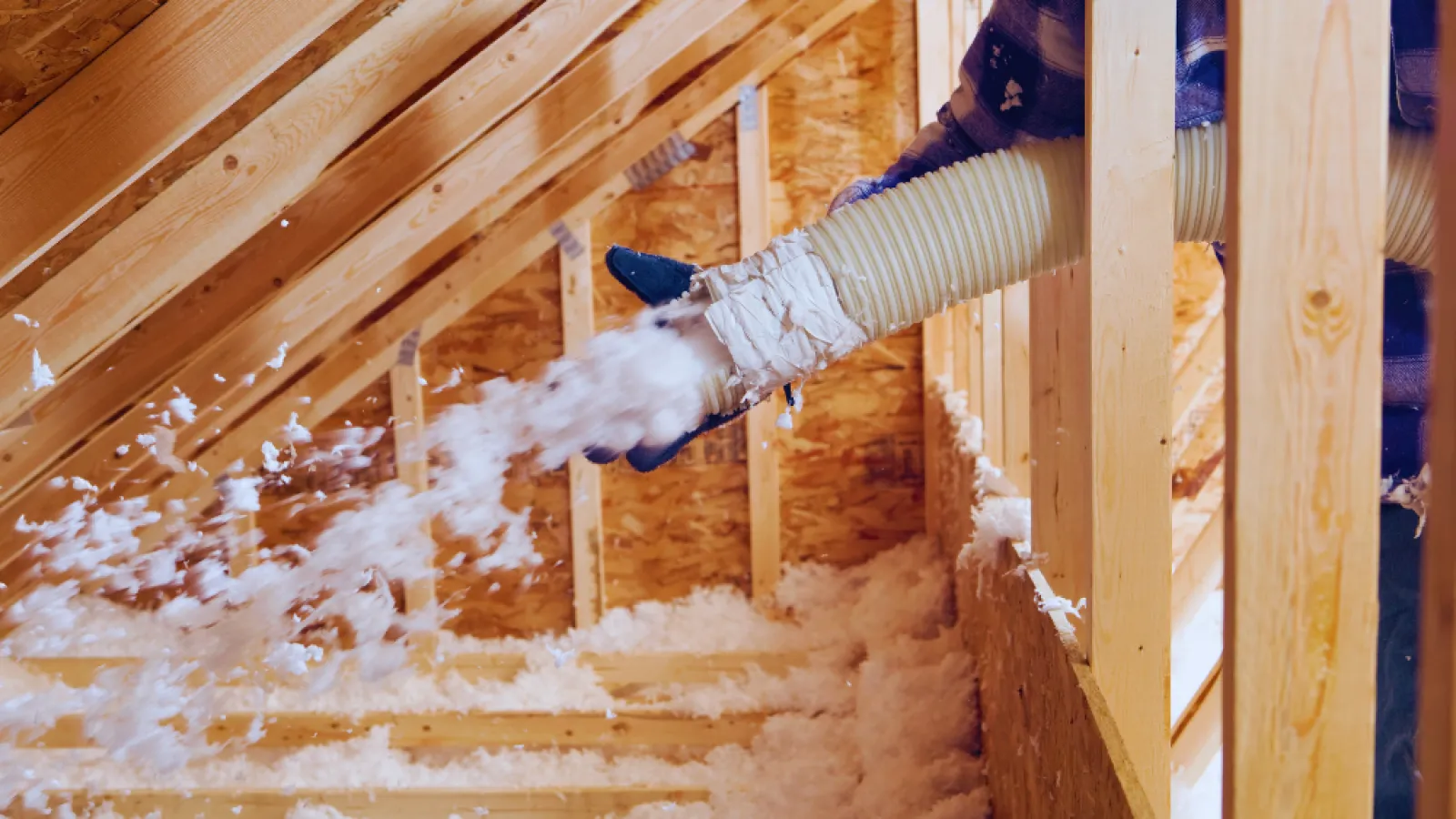If you've been experiencing rising energy bills, inconsistent indoor temperatures, or drafts, there's a good chance you're dealing with bad attic insulation. The attic plays a critical role in your home's energy efficiency, and when things go wrong up there, it can have a domino effect throughout your entire house.
At USA Insulation, we've helped thousands of homeowners tackle hidden issues in their insulation systems, especially in attics. In this blog, we'll discuss the most common attic insulation problems, how to recognize them, and what to do if you're dealing with a poorly insulated attic.
What Causes a Poorly Insulated Attic?
A poorly insulated attic doesn't always reveal itself immediately. In fact, many homeowners live with inefficiencies for years before noticing clear signs. However, once you understand what causes insulation issues, it's easier to fix and even easier to prevent.
In most cases, bad attic insulation stems from one or more of the following:
Inadequate insulation levels or improper R-value
Settled or compacted insulation over time
Moisture intrusion from roof leaks or condensation
Gaps or missing insulation around recessed lights, ductwork, or access doors
Aging or improperly installed spray foam insulation
Even homes that were insulated properly years ago may no longer meet today's energy standards. Or worse, the insulation may have broken down and no longer performs as intended.
Signs You Have Bad Attic Insulation
If your attic insulation isn't doing its job, you're going to feel it. The signs may not always be dramatic, but they're persistent. Here are the most common symptoms that point to a poorly insulated attic:
Uneven Heating or Cooling in Your Home
Does one room always feel colder than the others? Are you constantly adjusting the thermostat just to stay comfortable? When attic insulation fails to create a proper thermal barrier, uneven temperatures throughout the home are a common result.
Skyrocketing Energy Bills
Bad attic insulation forces your HVAC system to work overtime. If your utility bills have been increasing year after year, it may not be your equipment; it could be that your attic isn't holding in conditioned air.
Drafts or Cold Ceilings
If your ceilings feel cold in the winter or you feel a light draft near your attic hatch, that's a red flag. Even small gaps in attic insulation can create airflow problems that impact your comfort.
Ice Dams or Roof Condensation
In colder climates, poor attic insulation can cause snow to melt unevenly, refreezing at the roof's edge. These ice dams are a sign of heat loss through the attic and can lead to costly roof damage.
Common Problems With Spray Foam Insulation in Attics
While spray foam insulation is often touted as a premium solution, it still has its issues, especially when installed incorrectly. Homeowners sometimes assume that once spray foam is in, their insulation worries are over. Unfortunately, that's not always the case.
Off-Ratio Mixing or Incomplete Curing
Spray foam needs to be applied with precision. If it's not mixed properly or doesn't cure fully, the foam can crack, shrink, or pull away from rafters, leaving behind gaps where air can leak in or out.
Trapped Moisture and Mold Risk
If spray foam is applied over damp wood or in humid conditions, it can trap moisture, leading to mold growth over time. This issue is especially serious in closed-cell foam installations, where the barrier is meant to be airtight.
Too Much or Too Little Coverage
More isn't always better. Overapplying spray foam can block necessary ventilation and create pressure imbalances in the attic. On the other hand, underapplying leaves voids that compromise performance.
If you're experiencing musty smells, hot spots in your home, or visible sagging or gaps in your spray foam insulation, it's time to have your attic evaluated by a professional.
How to Replace Attic Insulation Safely and Effectively
If you're dealing with bad attic insulation, you might be wondering how to replace attic insulation without turning your home into a mess. Replacing attic insulation can be a significant project, but when done right, it leads to noticeable improvements in comfort, air quality, and energy savings.
Step 1: Remove Damaged or Ineffective Insulation
Whether you're dealing with wet fiberglass, compacted cellulose, or aging spray foam, the first step is removal. This should be done carefully, especially if the insulation contains mold, rodent droppings, or asbestos.
Step 2: Seal Air Leaks Before Reinsulating
Before adding new insulation, it's critical to seal gaps around pipes, wiring, chimneys, and recessed lighting. Air sealing is often overlooked, but it's essential for long-term performance and efficiency.
Step 3: Choose the Right Insulation Material
Your choice depends on your goals and your home's structure. At USA Insulation, we'll help you choose the best type of insulation for your attic based on your home's needs, structure, and energy goals.
Step 4: Install Insulation to the Correct R-Value
The R-value measures how well insulation resists heat. In most parts of the U.S., attics should have insulation rated between R-38 and R-60. Adding too little won't give you the results you want; too much can reduce ventilation and lead to moisture problems.
Summary
A bad attic insulation job impacts your bills, your comfort, your indoor air quality, and the long-term health of your home. Whether you're dealing with old fiberglass, degrading spray foam, or missing insulation entirely, these problems won't go away on their own.
The most common signs of a poorly insulated attic include:
Uneven temperatures across rooms
High utility bills
Drafts and cold ceilings
Visible moisture or mold in the attic
If you're experiencing any of these issues, it's time to act. USA Insulation is here to evaluate your attic, identify the root causes, and implement a lasting solution that works for your home, not just a quick fix.
Contact USA Insulation to Fix Your Attic Insulation Problems
At USA Insulation, we specialize in diagnosing and fixing attic insulation problems with high-performance materials and expert installation. Our team will inspect your attic, assess the condition of your existing insulation, and recommend the most effective approach.
If you've been living with bad attic insulation, don't wait for things to get worse. Contact us today and get started on creating a more comfortable, energy-efficient home.



